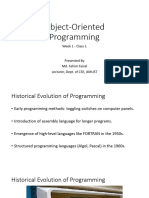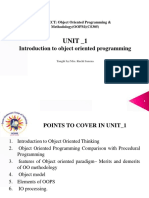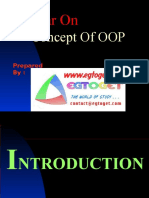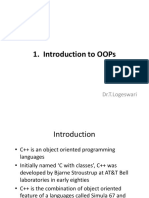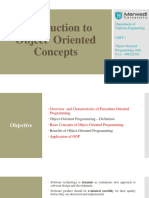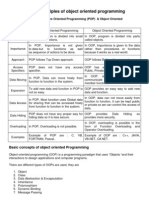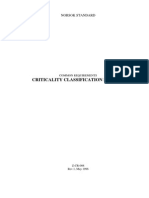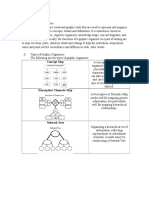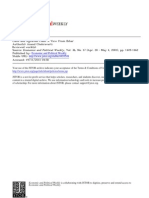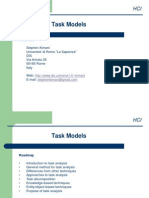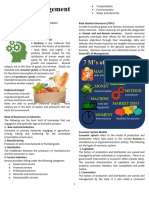0% found this document useful (0 votes)
464 views33 pagesSubject Code CS-305: (Object Oriented Programming & Methodology)
The document provides an introduction to the Object Oriented Programming and Methodology (OOPM) course taught by Ms. Poorva Shukla. It discusses key concepts like objects, classes, abstraction, encapsulation, inheritance, and polymorphism. It compares OOP to procedural programming and highlights benefits of OOP like reusability, easier maintenance, and more secure data handling. The document also provides examples to illustrate various OOP concepts.
Uploaded by
poorvaCopyright
© © All Rights Reserved
We take content rights seriously. If you suspect this is your content, claim it here.
Available Formats
Download as PDF, TXT or read online on Scribd
0% found this document useful (0 votes)
464 views33 pagesSubject Code CS-305: (Object Oriented Programming & Methodology)
The document provides an introduction to the Object Oriented Programming and Methodology (OOPM) course taught by Ms. Poorva Shukla. It discusses key concepts like objects, classes, abstraction, encapsulation, inheritance, and polymorphism. It compares OOP to procedural programming and highlights benefits of OOP like reusability, easier maintenance, and more secure data handling. The document also provides examples to illustrate various OOP concepts.
Uploaded by
poorvaCopyright
© © All Rights Reserved
We take content rights seriously. If you suspect this is your content, claim it here.
Available Formats
Download as PDF, TXT or read online on Scribd
/ 33










